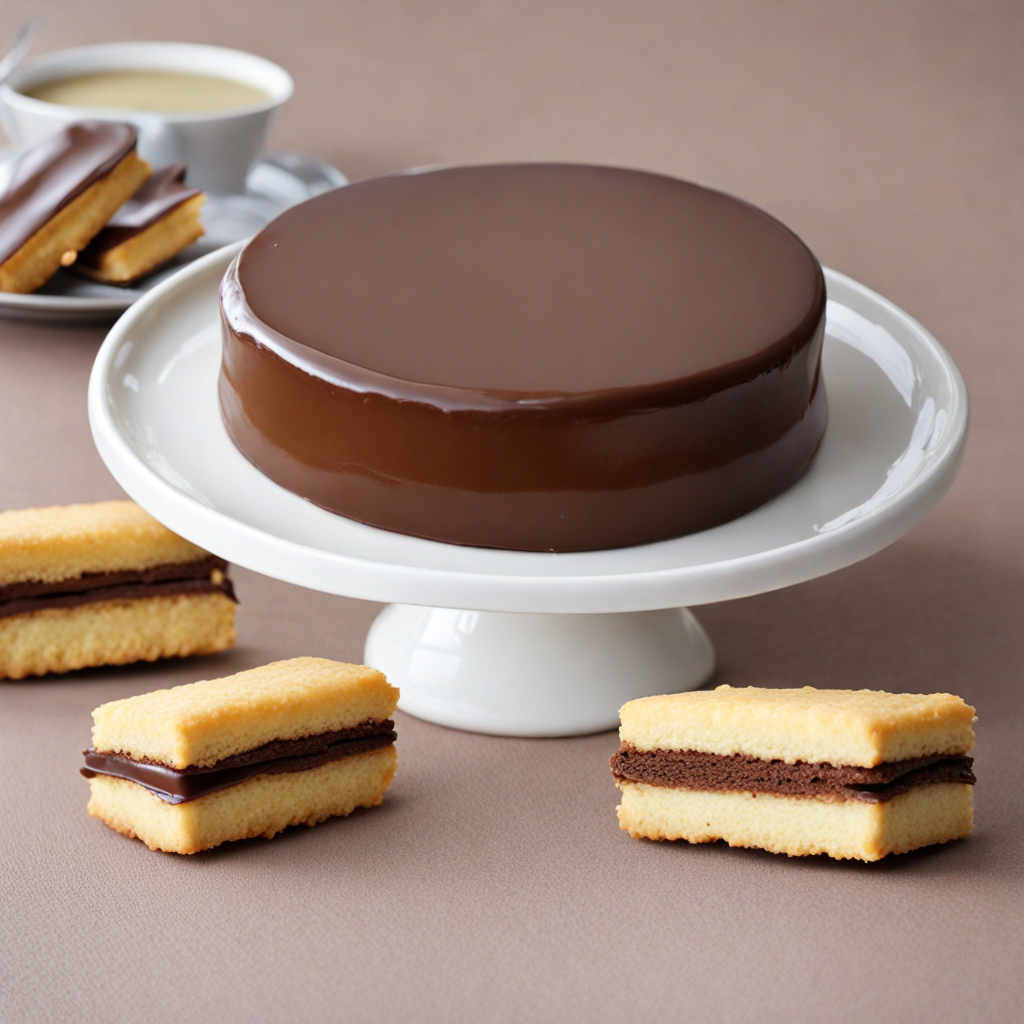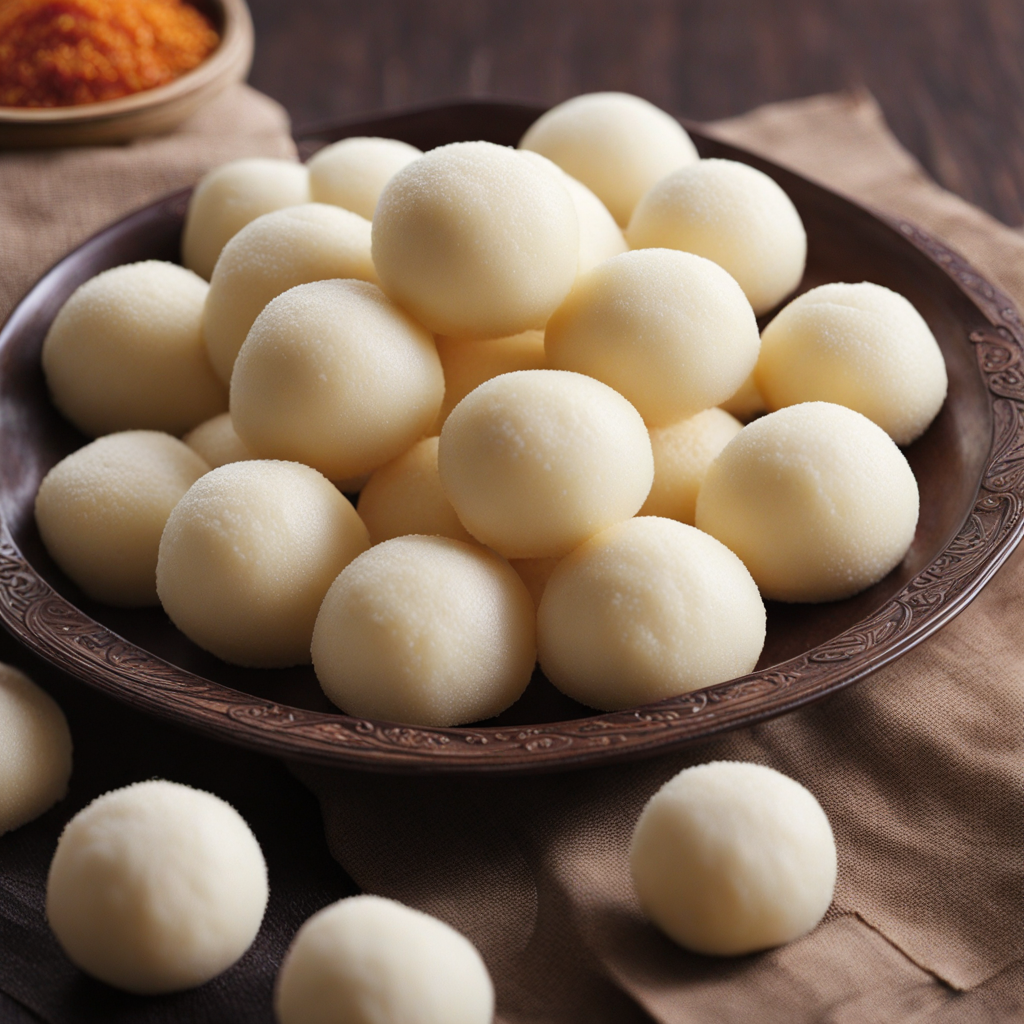Gateau Marie
Gateau Marie is a delightful Mauritian dessert that beautifully encapsulates the island's vibrant culinary heritage. This cake is characterized by its light, airy texture and a rich, buttery flavor that is both comforting and indulgent. Made primarily from a base of flour, sugar, and eggs, it is often enhanced with coconut, giving it a tropical flair that is synonymous with Mauritian cuisine. The cake is typically baked until it reaches a golden-brown hue, creating a slightly crisp exterior while maintaining a soft, moist interior that melts in your mouth. One of the standout features of Gateau Marie is its versatility; it can be enjoyed plain or adorned with a variety of toppings. A common choice is a drizzle of a sweet syrup, often flavored with vanilla or citrus zest, which adds a delightful sweetness and a hint of complexity to each bite. Additionally, some variations incorporate fruits such as bananas or mangoes, infusing the cake with natural sweetness and a burst of color that makes it visually appealing. The balance of flavors and textures makes every slice a pleasing experience for the palate. Gateau Marie is more than just a dessert; it is a cherished part of Mauritian culture, often served during festive occasions and family gatherings. Its rich history reflects the island's diverse influences, from French colonial roots to Creole flavors. For those seeking a new taste adventure, indulging in Gateau Marie offers a unique opportunity to experience the fusion of flavors and culinary traditions that define Mauritius, making it a must-try for any food enthusiast.
How It Became This Dish
The Sweet History of Gâteau Marie: A Culinary Gem of Mauritius Gâteau Marie, a delightful cake that is emblematic of Mauritian cuisine, has its roots deeply embedded in the rich tapestry of the island's cultural and historical evolution. Mauritius, a small island nation located in the Indian Ocean, has long been a melting pot of diverse cultures, thanks to its history of colonization, trade, and immigration. The island’s culinary landscape reflects this diversity, showcasing a unique blend of African, Indian, French, and Chinese influences. Among these, Gâteau Marie stands out not just as a dessert but as a symbol of the island’s multifaceted identity. Origins and Historical Context The origins of Gâteau Marie can be traced back to the French colonial period in the 18th and 19th centuries when the island was a French possession. During this time, French settlers brought with them a wealth of culinary traditions, including various pastries and cakes. The island's strategic location along trade routes made it a hub for spices, sugar, and other ingredients, which influenced the local cuisine. The cake itself is named after Marie, a common name in French-speaking cultures, and it is believed to have been created as a simple yet delicious dessert that could be easily made with accessible ingredients. The primary components of Gâteau Marie include flour, sugar, eggs, and milk, often flavored with vanilla or coconut. The simplicity of the recipe reflects the resourcefulness of the local population, who adapted French recipes to suit their available resources. Cultural Significance Gâteau Marie is not just a treat; it has become a cultural staple in Mauritian households. It is often associated with familial gatherings, celebrations, and special occasions. The cake is traditionally served during festive events such as weddings, birthdays, and religious holidays, making it a symbol of togetherness and community in Mauritian culture. In many families, the preparation of Gâteau Marie is a cherished tradition that is passed down through generations. Grandmothers often share their secret recipes with their grandchildren, imbuing the act of baking with familial affection and nostalgia. The cake is typically served with tea, making it a beloved snack during afternoon gatherings, where friends and family share stories and create lasting memories. Development Over Time As Mauritius progressed into the 20th century, the culinary landscape continued to evolve. The influence of Indian laborers, who arrived in large numbers following the abolition of slavery in 1835, introduced new flavors and techniques to the local cuisine. This fusion is evident in the modern adaptations of Gâteau Marie, where spices such as cardamom and nutmeg are incorporated into the recipe. The cake has adapted to the palates of the various cultural groups on the island, making it a versatile dessert that can be enjoyed by all. With the rise of tourism in the late 20th century, Gâteau Marie gained international recognition. It became a staple in Mauritian restaurants and cafes, appealing not only to locals but also to visitors seeking to experience the island’s culinary delights. The cake is often showcased at food festivals and culinary events, further solidifying its status as a symbol of Mauritian cuisine. In contemporary Mauritius, Gâteau Marie has also seen a resurgence in artisanal baking. Many bakers experiment with various flavors and ingredients, creating unique versions of the cake that reflect the island’s evolving culinary trends. Some variations incorporate local fruits such as mango, pineapple, or passion fruit, while others experiment with different types of flour or gluten-free alternatives, catering to dietary preferences and restrictions. The Ingredients: A Reflection of Mauritius The ingredients used in Gâteau Marie are a testament to the island's agricultural bounty. Mauritius is renowned for its sugarcane plantations, which produce some of the finest sugar in the world. The use of sugar in Gâteau Marie not only adds sweetness but also symbolizes the island's sugar heritage. Coconut, often used in Mauritian desserts, adds a distinct flavor that is reminiscent of the tropical environment. Additionally, the use of eggs and milk reflects the island's dairy farming practices, which have developed over the years. The incorporation of local spices and fruits showcases the rich biodiversity of the island and the influence of various culinary traditions. As such, Gâteau Marie serves as a delicious reminder of Mauritius’ agricultural and cultural richness. Gâteau Marie in Modern Mauritius Today, Gâteau Marie continues to hold a special place in the hearts of Mauritians. The cake is enjoyed not only at home but also in cafés and restaurants across the island. It is often presented in creative ways, with chefs adding their personal touch to the traditional recipe. Some establishments offer Gâteau Marie as part of a dessert platter, showcasing the cake alongside other Mauritian sweets, such as Alouda (a sweet milk drink) and gateaux piments (spicy lentil cakes). Furthermore, social media has played a significant role in popularizing Gâteau Marie among younger generations. Food bloggers and influencers share their takes on the classic recipe, often incorporating modern aesthetics and flavors. This digital presence has helped keep the tradition alive and has encouraged a new wave of interest in Mauritian cuisine. Conclusion In conclusion, Gâteau Marie is more than just a cake; it is a reflection of Mauritius' rich history and cultural diversity. From its origins during the French colonial era to its evolution in contemporary Mauritius, the cake has remained a beloved symbol of community, celebration, and culinary heritage. As it continues to adapt to modern tastes and trends, Gâteau Marie will undoubtedly remain a cherished part of the island’s gastronomic identity, ensuring that future generations will continue to enjoy and celebrate this delightful dessert.
You may like
Discover local flavors from Mauritius







